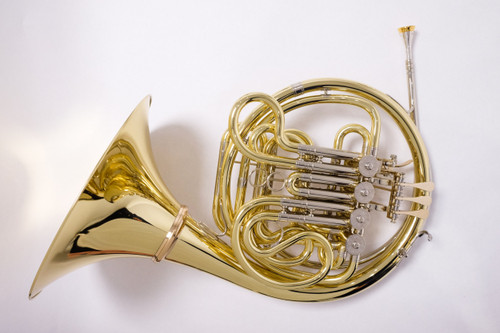Finke Horns
Finke Professional Horns
The craftmanship on our instruments goes down to the smallest details. With more than 50 years of experience in making musical instruments and intensive research and development our models comply to the high expectation a professional musical instrument should have.
The FINKE instruments are the product of a unique philosophical approch. It is possible to keep the traditional style and sound of the instrument and to reach an improvement of the response, intonation and flexibility, at the same time. Therefor the development of each instrument was based on the desire of a certain sound concept, but to leave the player enough room for exposition.
History
In 1942 Helmut Finke served in the German army. 1943 he was badly wounded in Russia. After he left the hospital he was released form the military service, so he started to study on a engineering school until 1945 when this was closed a few months before the war ended. When the Herford symphony orchestra was reestablished after the war he decided not become a mechanical engineer and instead he became the 2nd trumpet player in this orchestra, on the first chair was Walter Holy.
In 1950 Helmut Finke bought a second hand turning lathe and began to make mouthpieces and started to do some repair work. Soon, he assembled his first trumpet from old parts. After this, the decision to establish a workshop was made.
In 1954 the increasing demand made it necessary to hire two workers. Encouraged by Wilhem Ehmann, he started in the mid 50’s to make copies of sackbuts and baroque trumpets. He was the first maker on this field in the 20th century. Soon, the line of instruments includes high trumpets and french horns and other bigger brass instruments. In 1959 Helmut Finke designed with the help of Otto Steinkopf the coiled natural trumpet (also known as Clarino trumpet) from the well know picture of Gottfried Reiche.
During this period he was an active musician. The piccolo trumpet and the natural trumpet were his specialties. With his friend Walter Holy and later Ingus Schmidt they were the first trumpet players of the Capella Colonienis (the chamber orchestra of the radio station cologne). In the workshop, he by now employed 10 craftmen. The increasing demand and more machinery made it necessary to leave Herford and to build a modern facility in Exter.
Helmut Finke was always fascinated by the french horn as a technical very demanding brass instrument. In the late 60ies he decided to specialize on this instrument. At that time not many companies were making high quality orchestra horns.
Finke developed a complete line of horns. This was the initial for the long and tight cooperation with the Physical Technical Institute in Brunswick with its branch for physical acoustics on musical instruments. In 1973 the first descant double and triple horn were made, followed by several patents. The french horns, trumpets and trombones have become the main products.
For Finke it has always been quality decision to make all important parts in the own workshop. With the complete manufacturing knowledge for all parts, the control and further developments could be realized. Finke is one of the few makers that produces the major parts like the bells, valves and the crooks in their own workshop.

